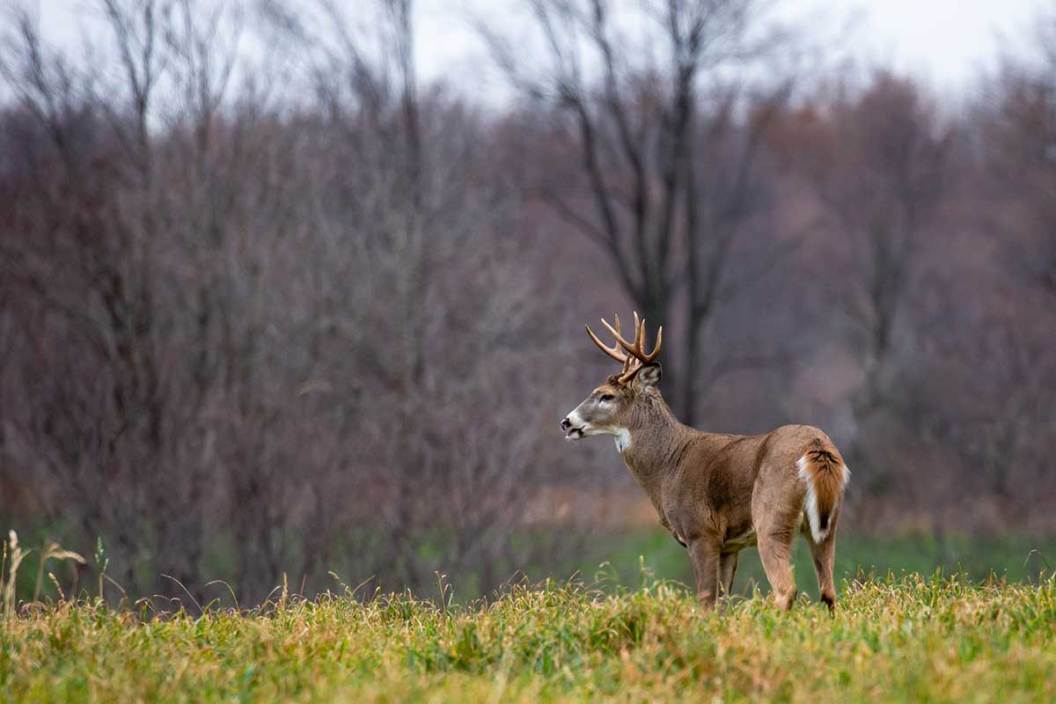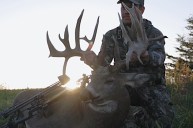Aging deer has become a highly-talked about practice in recent years, as well as being slightly controversial, as hunters seek to harvest mature bucks. When I was growing up, this didn't seem to be such a hot topic. Whether the increase in interest has derived from social media or television programs highlighting giant bucks that are 5.5-plus years old, growing up we were just interested in whatever bucks would show up within shooting range. Despite being a fairly new discussion, I think the motive behind it is great. Harvesting mature bucks allows for the younger deer to grow, creating a healthier deer herd for everybody. Not to mention, mature bucks just look a lot cooler on the wall!
Ultimately, aging deer is tough work, especially when you're actively hunting. With adrenaline at an all-time high, combined with the short amount of time that deer present an opportunity to a hunter, our judgment is typically flawed. How could it not be?
"Ground Shrinkage," as the term has been coined, is a very real thing, and something I have experienced several times. You think you have a giant, 5.5-year old stud in front of you, only to realize after harvesting him that he was a not so "giant" 3-year-old with plenty of room to grow. We've all been there, and it's a tough pill to swallow at times. Over the years I have gained more experience judging whitetail deer "on the hoof" and have developed key methods for aging bucks. Although not always perfect, which they can never be, they have proven to be effective tips for accurately aging deer from your treestand.
1.5-Year-Olds

This is an important age-class to get out of the way first, and will be easily identifiable from the treestand. Bucks that have just passed their first birthday will be sporting small racks, and will appear to look like antlered does, with their skinny bodies and narrow faces. This is especially noticeable when a 1.5-year-old buck is feeding alongside a more mature deer. The size difference will often be comical. Typically 1.5 year old bucks will either have spiked racks or possibly even forks. Originally there was evidence to support that you could determine a buck's genetic potential at this age. However, new research shows that it lacks consistency.
2.5-Year-Olds

These bucks will start to fill into their bodies a little bit more, taking on what most hunters would consider an "athletic build." They are still slender compared to mature bucks, however their bodies don't appear quite as awkward as a 1.5-year-old. 2.5-year-old bucks will start to develop slightly larger racks, oftentimes sporting 6 or 8 points, with a little bit more character to them. Their necks will still appear very slim, and they have yet to develop that sloping back that you'll see from older deer.
3.5-Year-Olds

Here's where the confusion steps in. I have met a lot of hunters over the years that have a hard time differentiating a 3.5-year old buck from a 4.5-year-old, and I'll admit, I have been confused myself. These bucks are capable of sporting impressive racks with the right genetic makeup, and they have put on a significant amount of weight from the previous year. While these bucks can often fool you, especially during the rut as their necks have bulked up, their back still remains relatively straight, and their neck still hasn't quite dropped low enough to the brisket, at least not like you will see on a 4.5-year-old deer.
4.5-Year-Olds

Most hunters all over the country will consider a 4.5-year old buck to be mature, and assuming their headgear is impressive, they will move onto the "shooter" list. At this point, a buck's antlers will have reached around 80% of their potential, and you won't be seeing significant jumps in the future. Deer at this age will often show a heavier and sagging belly, combined with a sloping back trying to support all of this weight. Their neck muscles have enlarged, although will likely continue to grow for the next couple of years, and their bodies will begin to look slightly too large for their legs. While it is universally accepted that this is a mature age and is classified as shot worthy, the following year is the class that I prefer to target, and there are key signs to look for.
5.5-Year-Olds

At 5.5 years old, the antlers essentially have stopped growing and there is nowhere to go but down as far as scoring goes. These bucks have started to develop a very noticeable hump just above their shoulders, and this is exemplified by their obvious back slope. These bucks will appear to have much shorter legs as their bodies are at their largest point, and their heads will take on a sort of block-like shape. If a buck reaches this age, rest assured that he is extremely wise and will use his nose to stay out of any danger. However, if you're lucky enough to fool this buck, take advantage, because he is a trophy!
Aging a buck isn't an exact science. We have to rely on experience as well as the presented data to make a decision, and oftentimes there are flaws in that. However, with enough experience deer hunting, you'll begin to key in on what signs to look for, and be better able to make those judgment calls.
After one experience shooting what I thought was a mature buck but ended up only being a 3.5 year old, I spent the entire offseason looking at trail camera pictures and pointing out features that were telling of a bucks age. This is an incredible way to become more efficient at aging deer from the treestand, and something that every avid whitetail hunter should practice!




